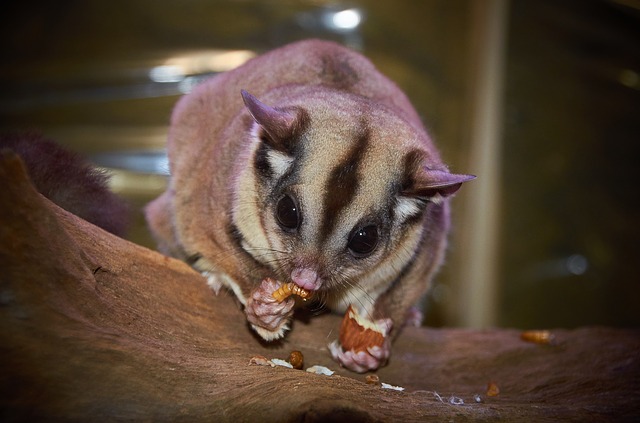
The sugar glider is a small marsupial that originated from the rainforests of Australia and Indonesia which have been domestically bred as household pets in the United States for the last 12-15 years. The name refers to its preference to eat almost anything that is sweet, especially fresh fruits and vegetables, as well as its ability to glide with the help of a skin membrane that stretches from its wrist to its ankles.
Because sugar gliders are very easy to take care of, they have become popular household pets, especially among young children. They are small and do not take much space and do not require much grooming as they can keep themselves very clean. They are also very easy to feed with fresh fruits and vegetables. Other lovable characteristics of the sugar glider are that it can get incredibly attached to its human and can go almost everywhere without being caged.
Just like any other pets, sugar gliders must be properly packed when being transported or shipped. Here are some tips on how to ship a sugar glider via air to ensure that it is comfortable all throughout the journey and will arrive at its destination in the best condition.
The sugar glider is best shipped inside a cat carrier or kennel. Since it is a small animal, it can pass through a kennel’s grates so install an additional 1/2-inch mesh on the grates to prevent the glider from coming out. Most airlines also require kennels to be bolted to prevent them from coming apart during transit.
Place the sugar glider inside a bonding pouch, usually made from soft and warm fabric such as fleece. The pouch should be large enough for the glider to comfortably move around and sleep. Use a larger pouch if shipping several gliders in a package.
Securely hang the pouch inside the kennel using zip ties. Add more fleece or other packing material around the cage to prevent the pouch from sliding around during transit. The pouch should not be closed to allow the glider to come in and out as necessary.
Place some moisture-rich food such as grapes or slices of apples inside the kennel to provide the glider with nutrition and hydration during transit.
If the temperatures are low, wrap a heating pad in fleece and place it inside the pouch. They should not have direct contact with the sugar gliders. If the temperature is warm, do not include these when shipping.
Close the kennel and make sure that the lock will not come undone. Address and label the kennel with “Live Animals,” “Handle with Care” and “This Side Up.”
Make sure you have all paperwork such as the animal’s health certificate, proof that it didn’t come from the wild, and other pertinent documents before you head off to the airport to avoid any issues and delays.
